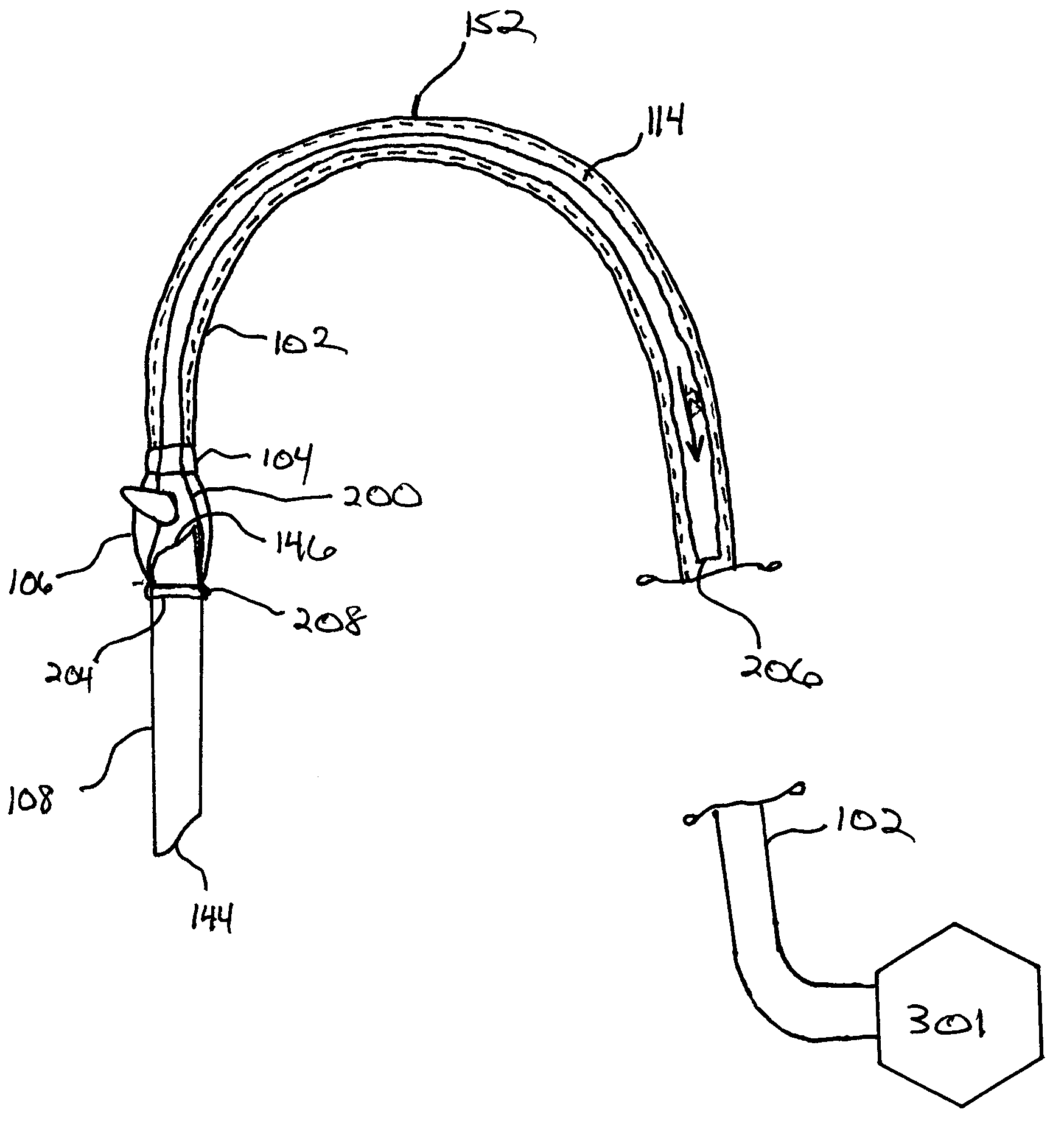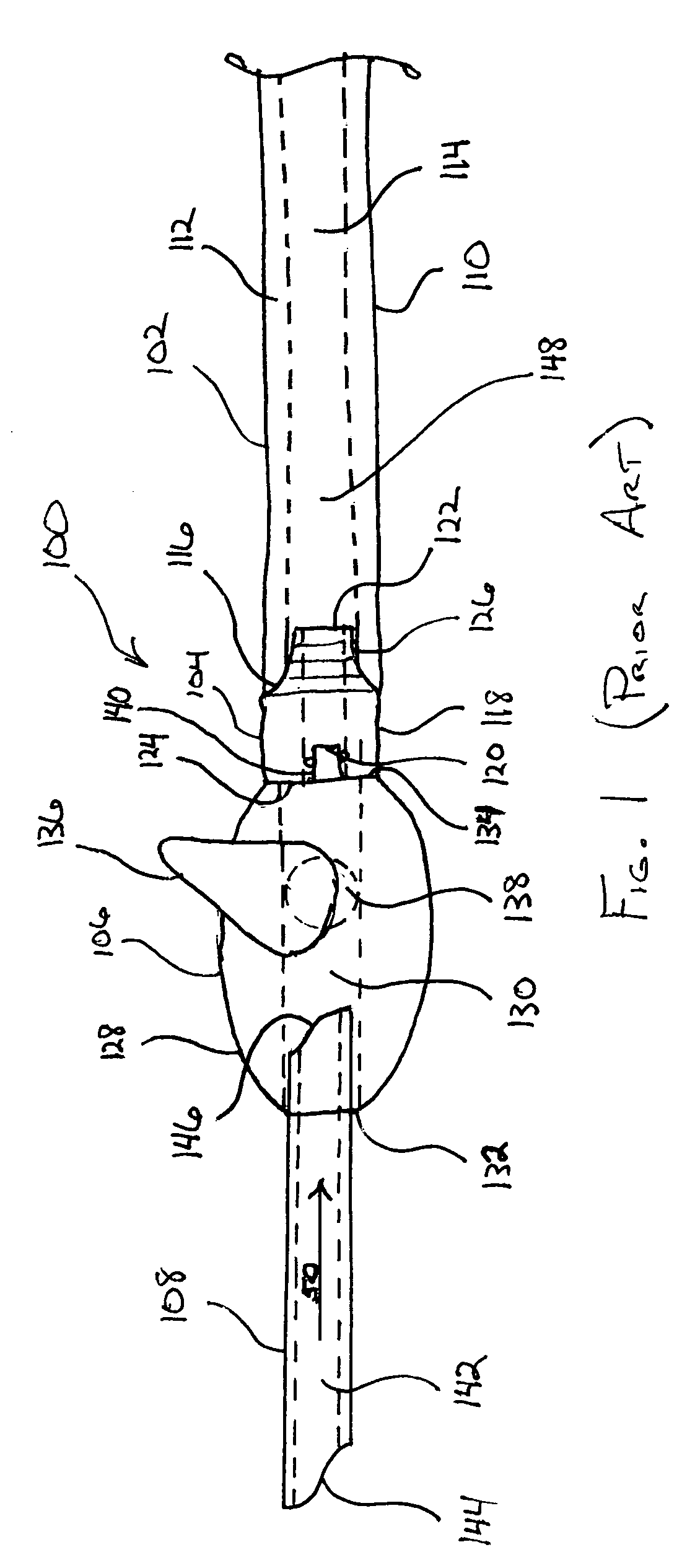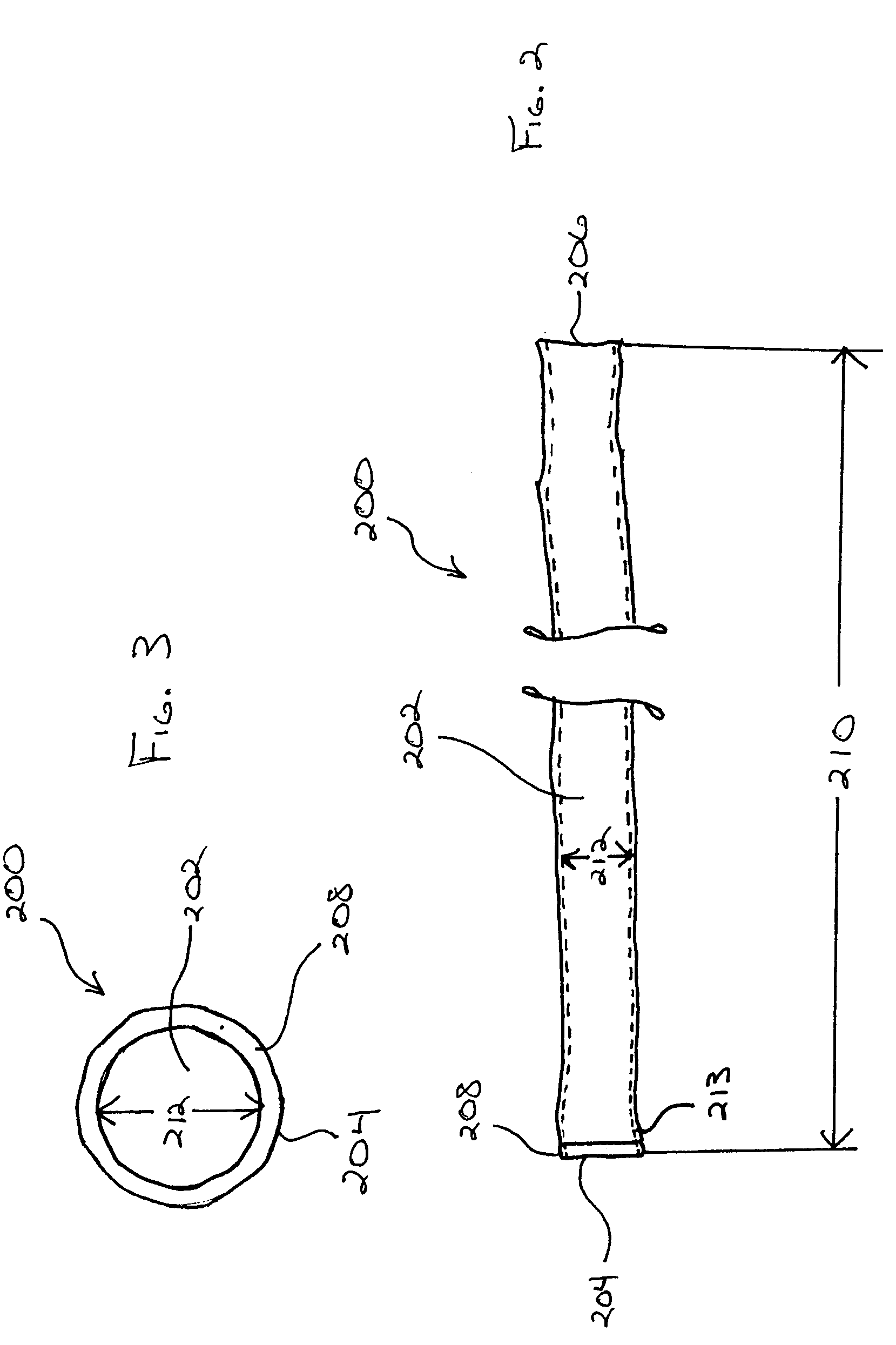Backflow prevention sleeve for suctioning devices
a suction device and backflow prevention technology, applied in the field of suction devices, can solve the problems of contaminated fluid in the vacuum line, temporary loss of suction flow, cross-contamination of microorganisms, etc., and achieve the effect of preventing cross-contamination of microorganisms
- Summary
- Abstract
- Description
- Claims
- Application Information
AI Technical Summary
Benefits of technology
Problems solved by technology
Method used
Image
Examples
Embodiment Construction
[0032] Embodiments of the present invention have wide applications to a number of dental and medical procedures and environments. Therefore, although preferred embodiments of the invention will be described with respect to dental devices and applications, the invention is not limited to these embodiments, but would be equally applicable to other medical applications in which eliminating cross-contamination in vacuum equipment is desired.
[0033] Referring now to the drawings, there is shown in FIG. 1, a hand-operable suction device 100 as presently used in the practice of dentistry. As illustrated in FIG. 1, the hand-operable suction device 100 comprises a vacuum line 102, a hose adapter 104, a control valve 106 and an evacuator tip 108. Though not depicted, it is to be understood that vacuum line 102 is ultimately fluidly connected to a suction system, i.e. vacuum source, for providing suction through the hand-operable suction device 100 as indicated by the suction flow arrow in FIG...
PUM
 Login to View More
Login to View More Abstract
Description
Claims
Application Information
 Login to View More
Login to View More - R&D
- Intellectual Property
- Life Sciences
- Materials
- Tech Scout
- Unparalleled Data Quality
- Higher Quality Content
- 60% Fewer Hallucinations
Browse by: Latest US Patents, China's latest patents, Technical Efficacy Thesaurus, Application Domain, Technology Topic, Popular Technical Reports.
© 2025 PatSnap. All rights reserved.Legal|Privacy policy|Modern Slavery Act Transparency Statement|Sitemap|About US| Contact US: help@patsnap.com



